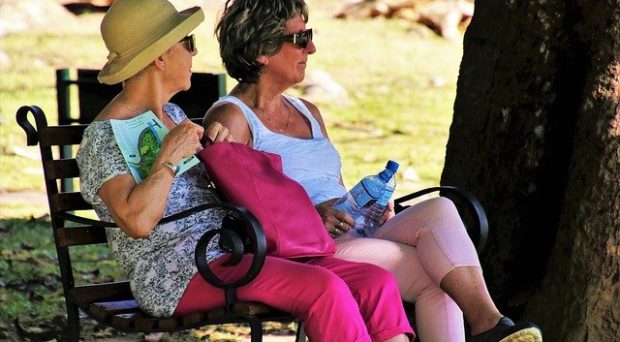
Countries With More UVB Sunlight Have Lower Colon Cancer Rates
If you live in a country with more UVB sunlight, you might have an advantage when it comes to risk of cancer.
Ultraviolet B (UVB) sunlight is used by your skin to make vitamin D, which is anti-carcinogenic. For those of us farther from the equator, we only get a little bit of UVB, usually in the middle of the day (around 10am-2pm, depending on where you live) and during summer months. By comparison, people living in countries closer to the equator are bathed in UVB year-round for most of the day.

How Does Vitamin D Prevent Cancer?
Vitamin D has tons of effects on cells. In cancer research, vitamin D is DINAMIT! This acronym describes the sequence of events at the cellular level when vitamin D is low. DINOMIT spells disjunction, initiation, natural selection, overgrowth, metastasis, involution, and transition (see accompanying illustration from Annals of Epidemiology). With good vitamin D levels, cells can communicate better with their neighboring cells due to higher production of cadherin molecules. With low vitamin D levels, cells don’t know that they are surrounded by other cells, so they divide uncontrollably, causing cancer.
You Might Not Notice Until You’re Older

Our research published in BMC Public Health suggests that the anti-cancer effect of vitamin D is hard to notice in people under age 45. In this study, we analyzed the global differences in colorectal cancer, one of the most common forms of cancer. We found that younger people in low-UVB countries had nearly the same rates of cancer as younger people in high-UVB countries. However, when looking at people older than 45, those in low-UVB countries had dramatically higher rates of cancer than those in high-UVB countries.
Does this mean that you don’t need vitamin D until you’re older? Not quite. The cancer-causing effects of low vitamin D take a long time to develop. (In fact, this is a key reason that researchers didn’t see high rates of cancer in low-UVB countries until they looked at older age groups.) Young or old, vitamin D could help you prevent cancer.
What Should I Do If I Don’t Live Near The Equator?
If you don’t live near the equator, you may need to take additional steps to ensure you have good vitamin D levels. This can include eating high vitamin D foods (such as fatty fish and dairy) or taking a vitamin D supplement. You can also get a few extra rays of mid-day sunshine, as long as you don’t get sunburned.
If you do live near the equator, you probably don’t need to worry quite as much. However, if you work indoors and rarely go outside, you may want to consider alternate ways to get your vitamin D.
Regardless of where you live, you can ask your doctor to measure your vitamin D levels, or you can order an at-home vitamin D test. Previous research suggests that 40 ng/mL is a good minimum target for cancer prevention.
Comments